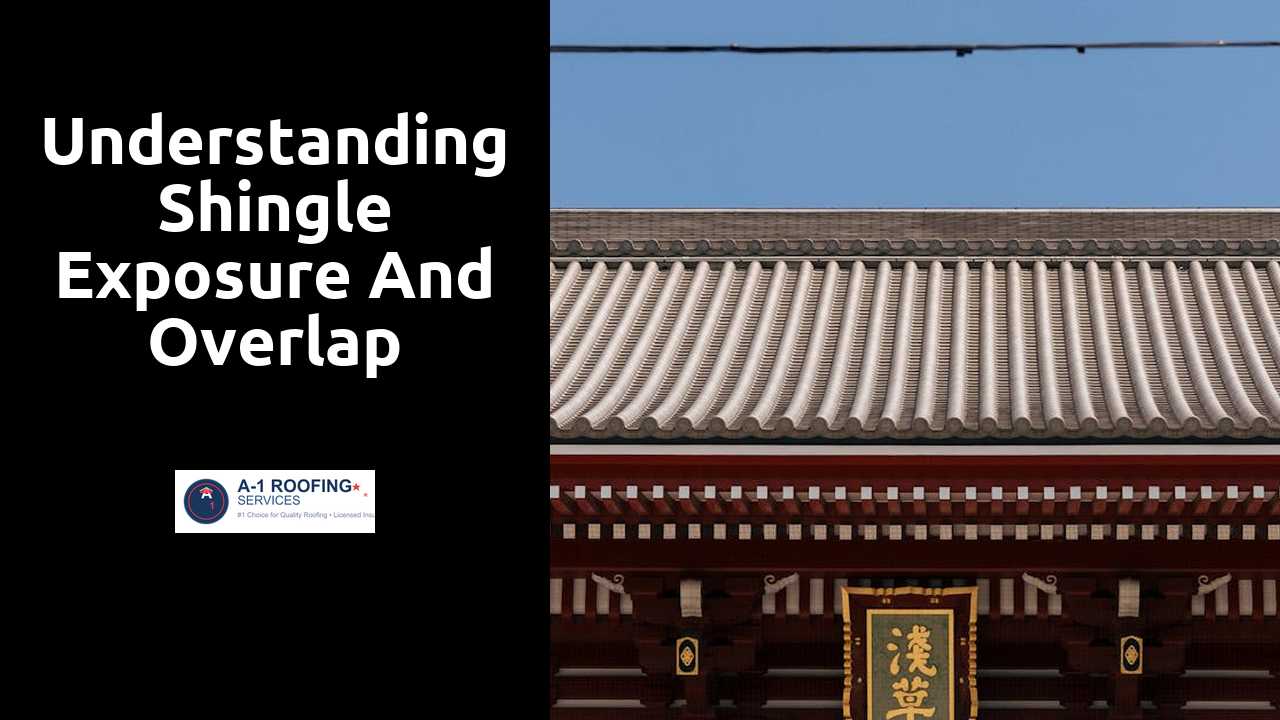
Understanding Shingle Exposure and Overlap
Table Of Contents
Visual Indicators of Poor Shingle Exposure
When shingles are not properly exposed, several visual cues can signal potential issues. One common indicator is the sighting of uneven rows or misalignments along the roofline. Discrepancies in shingle alignment can lead to inadequate coverage, raising the risk of leaks. Additionally, if shingles are curling or buckling, this often suggests they are not receiving the proper sunlight or ventilation, compromising their function.
Another sign of poor exposure is the presence of excessive granule loss. Granules protect shingles from UV rays and weather elements; when they are missing, the underlying layers may deteriorate faster. Streaks or discoloration on the shingles can also be telling; these markings may indicate moisture accumulation or algae growth, both of which can worsen exposure problems. Homeowners should routinely inspect their roofs to catch these signs early and address any exposure-related issues promptly.
This new blog post covers this topic in more detail.
Signs Your Roof May Be Compromised
Roofing issues can often be detected through noticeable signs that indicate a potential problem. Cracks, curling, or missing shingles are common indicators that the integrity of the roof may be at risk. If granules are found in gutters or on the ground below, this could signify that the shingles are deteriorating. These symptoms not only affect the appearance of your roof but may also lead to further complications if not addressed.
Water damage is another clear sign of a compromised roof. Stains on interior ceilings or walls often suggest leaks originating from the roofing system. Mold or mildew can also develop in areas where moisture is trapped, indicating potential deterioration of the roofing materials. Regular inspections and prompt attention to these signs can help maintain the roof’s integrity and prevent more extensive damage down the line.
Calculating Shingle Exposure
Determining the correct shingle exposure is crucial for ensuring a roof’s integrity and performance. The process begins with understanding the manufacturer’s specifications. Commonly, shingles are designed to be installed with a specific exposure along the length to optimize waterproofing and aesthetic appeal. This exposure, often cited in inches, differs among shingle types and styles, so referring to the packaging or installation guidelines is essential before starting the measurement.
To calculate potential exposure accurately, measure the length of the shingle and decide how much of it will overlap with the next row. The standard exposure is typically half the length of the shingle, but this can vary based on the slope of the roof and the specific type of shingles used. By carefully measuring and marking the desired overlaps on the roof deck, you can ensure an even installation that maximizes performance and minimizes the risk of leaks.
Step-by-Step Guide to Measurement
To accurately measure shingle exposure, start by determining the length of each shingle. Most standard asphalt shingles measure about 36 inches, but it's essential to confirm the exact dimensions since variations exist. Once you have the length, lay the first shingle flat on the roof deck, ensuring it covers the line. The exposure is the portion of the shingle that remains visible above the one beneath it.
Next, position a second shingle directly above the first, aligning its bottom edge with the top of the first shingle. Use a measuring tape to gauge the distance from the bottom of the upper shingle to the bottom of the lower shingle. This distance represents the shingle exposure. Be sure to repeat this process at various points along the roof to ensure consistent measurements and account for any irregularities that might affect overall performance.
The Relationship Between Exposure and Lifespan
Proper shingle exposure is crucial for ensuring the longevity of a roof. Insufficient exposure can lead to accelerated wear and tear, leaving shingles vulnerable to weathering and potential leaks. When shingles are overlapped too much or not enough, it disrupts the intended water-shedding properties. This can result in moisture accumulation beneath the shingles, ultimately compromising the roof structure over time.
Installation techniques play a significant role in optimizing shingle exposure. Professional roofing guidelines dictate specific measurements for exposing and overlapping shingles to ensure maximum durability. Adhering to these standards not only protects the integrity of the roof but also enhances the lifespan of the materials used. Maintaining a well-exposed roof can mitigate damage caused by harsh elements, giving homeowners peace of mind regarding their investment.
How Proper Installation Influences Durability
The installation process of shingles significantly affects their longevity and effectiveness. Proper application ensures that shingles are secured firmly, which helps to prevent wind uplift and water infiltration. Misalignment during installation can create gaps, compromising the roof's integrity and allowing moisture to penetrate beneath the surface. This can lead to damage not only to the shingles themselves but also to the underlying roofing structure, promoting mold growth and other structural issues.
In addition to correct alignment, careful attention to layering and overlap plays a crucial role in durability. Each course of shingles should properly overlap the layer beneath it, providing a barrier against the elements. Incorrect overlap can expose vulnerable areas to rain and snow, increasing the risk of leaks and subsequent repairs. Ensuring that shingles are installed according to manufacturer specifications will optimize their performance and extend the roof's lifespan.
Related Links
How Weather Conditions Affect Shingle InstallationTechniques for Properly Aligning Shingles